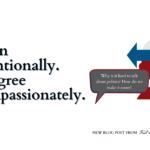 Fake news has arguably never been a bigger problem than it is today. Misinformation spreads like wildfire online, which can have serious implications if anyone ever acts upon false information, such as the Pizzagate incident in 2016.
Fake news has arguably never been a bigger problem than it is today. Misinformation spreads like wildfire online, which can have serious implications if anyone ever acts upon false information, such as the Pizzagate incident in 2016.
To date, search engines and social media platforms have been reluctant to apply more stringent standards for content published and circulated on their websites. Since censorship poses a serious issue for First Amendment rights, how can we genuinely combat the spread of false information without resorting to draconian censorship policies?
The government and tech companies may not develop an ideal solution for a while but in the meantime, here are three strategies individuals like you can try to detect and avoid fake news and reviews online:
Media Bias / Fact Check
One of the most comprehensive news fact-checking websites is Media Bias / Fact Check (MBFC), which is a donation and third party advertising-funded platform “dedicated to educating the public on media bias and deceptive news practices.” They have teams of editors and fact-checkers who evaluate news organizations and stories to determine the credibility of each source; they also have lists for sources categorized by political leaning, as well as “Least Biased,” “Conspiracy-Pseudoscience” and “Questionable Sources” categories.
MBFC employs a rigorous and transparent methodology for source credibility evaluations, making it an ideal resource for anyone searching for easily accessible information about the trustworthiness and potential bias of a news source.
CRAAP Test
If you cannot find a particular source on MBFC or you want to evaluate the credibility of a source on your own, then your best bet would be the CRAAP test, which stands for:
- Currency: how timely (recently published and updated) is the information?
- Relevancy: how important is this information for your needs and are there other sources with similar information?
- Authority: who is the publisher and what are their credentials and reputation?
- Accuracy: how reliable is the information? (Where did it come from and is the language relatively unbiased and free of emotion?)
- Purpose: why does this information exist and are the points of view expressed relatively objective and unbiased?
With the CRAAP test, you’ll be able to reasonably determine whether an article or publication source is excessively biased or even fake by analyzing the aforementioned most important factors related to a source’s credibility.
FakeSpot
Beyond the news, fake information is rampant online – especially on reviews-driven websites like Amazon, TripAdvisor, Walmart.com and Yelp. To avoid getting duped by fake reviews (or companies that use shady tactics to rake in more five-star reviews for their products), copy the web link and plug it into FakeSpot.
FakeSpot’s algorithm will assess a variety of factors for a particular product or business page and produce a grade of A, B, C, D or F based on the likelihood of deception (based on review patterns), quality of review content, percentage of reliable reviews, and other related factors.
Recap: Don’t Get Fooled by Fakes
Whether you’re concerned about reading and inadvertently sharing fake news or you want to avoid buying products supported by lots of fake reviews, we hope you’ll try out any of these three strategies for detecting fake information online so you can avoid the pitfalls of reading, believing and sharing misinformation with your own social network.





